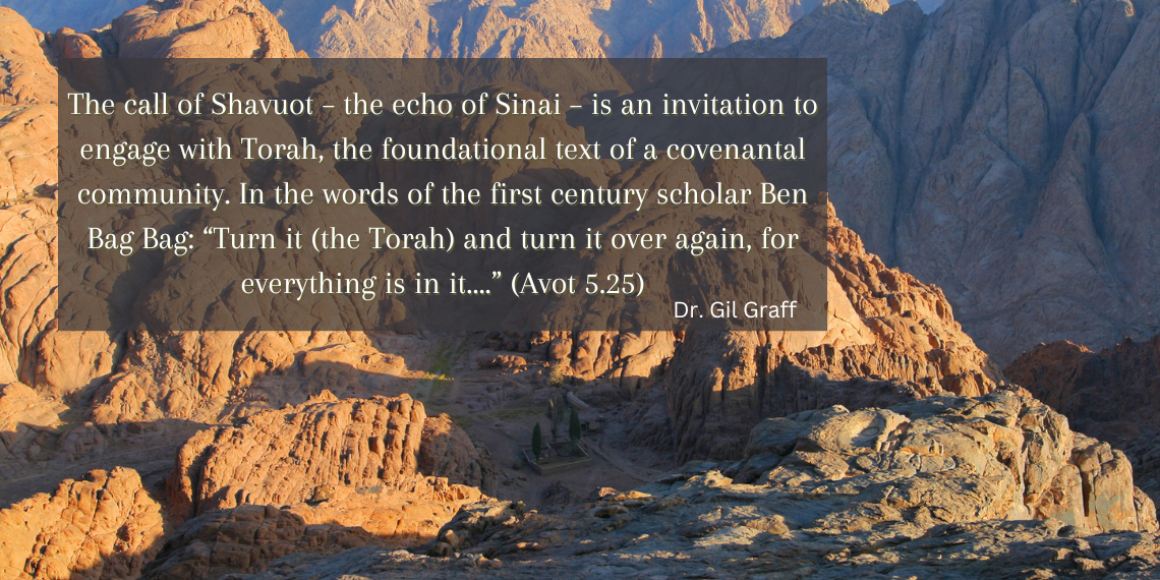
The Echo of Sinai: A Shavuot Reflection
My first visit to Israel, in 1971-72, spanned an academic year. It was a heady period in Israel, amidst the jubilation that followed the 1967 Six Day War, and pre-1973 and the anxiety that followed the Yom Kippur War. When, toward the end of 1971, I saw a circular announcing a winter trip through Sinai (in Israeli hands since the 1967 War), I signed up, as did a bus full of American students.
Sharm El Sheikh, now an Egyptian resort town, was beautiful, even in December. More interesting, though, was ascending Jabal Mousa (Mountain of Moses), identified by some as the biblical Mt. Sinai (parenthetically, the oldest, continuously inhabited Christian monastery in the world, Saint Catherine’s, is located at the foot of that mountain). Though the identity of Mt. Sinai remains uncertain, the impact of the narrative of the encounter at Sinai is profound.
The Torah relates that, at Mt. Sinai, the people Israel entered into a covenantal relationship to be a “kingdom of priests and a holy nation” (Exodus 19:6). Torah teaching, as interpreted and applied over the course of millennia, has served generations of Jews as a roadmap to living a life of holiness. Torah teaching is by no means static; Tamar Ross, Professor Emerita of Jewish philosophy at Bar Ilan University, aptly points to the “endless ability of Torah-committed Jews to discover (or eke out) fresh and relevant meaning from the ancient hallowed words.”
A central expression of covenantal living is translating the ideals of Torah to concrete actions through the performance of mitzvot, sacred obligations. Living a life of Torah involves the application of Torah to life. “But,” writes 20th century Jewish philosopher Eliezer Berkovits, “since there is no such thing as life in general, since it is always a certain form of life at a specific time in history, Torah application means application to a specific time, in a specific situation.” Noting that the Torah text remains the “cultural-linguistic filter through which new ‘hearings’ are understood,” Ross points to expanded meaning (even appearing to turn the original message on its head) emerging from “new sociopolitical and cultural contexts and the novel rabbinic interpretations provoked in their wake….”
Micah Goodman, a contemporary Israeli author and public intellectual, observes that “Judaism is the Jews’ ongoing conversation.” He comments that “one precondition for joining any conversation is a basic familiarity with its context. If we want to engage in a political debate, we must be familiar with the political context; and if we want to engage in a scientific debate, we must understand something about the science. And in order to join the intergenerational conversation about Judaism, Jews need to be familiar with its contents.” The call of Shavuot – the echo of Sinai – is an invitation to engage with Torah, the foundational text of a covenantal community. In the words of the first century scholar Ben Bag Bag: “Turn it (the Torah) and turn it over again, for everything is in it….” (Avot 5.25).
